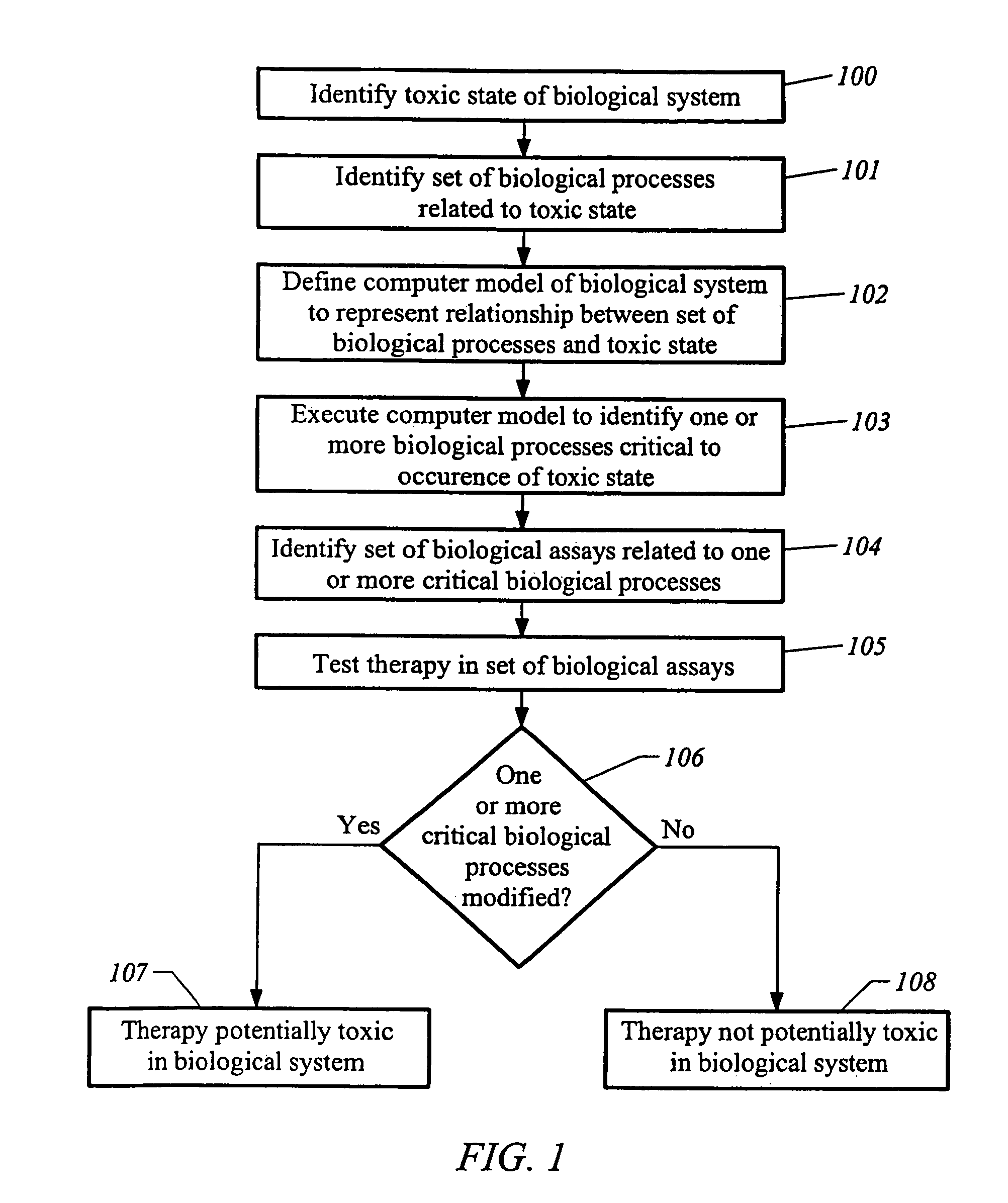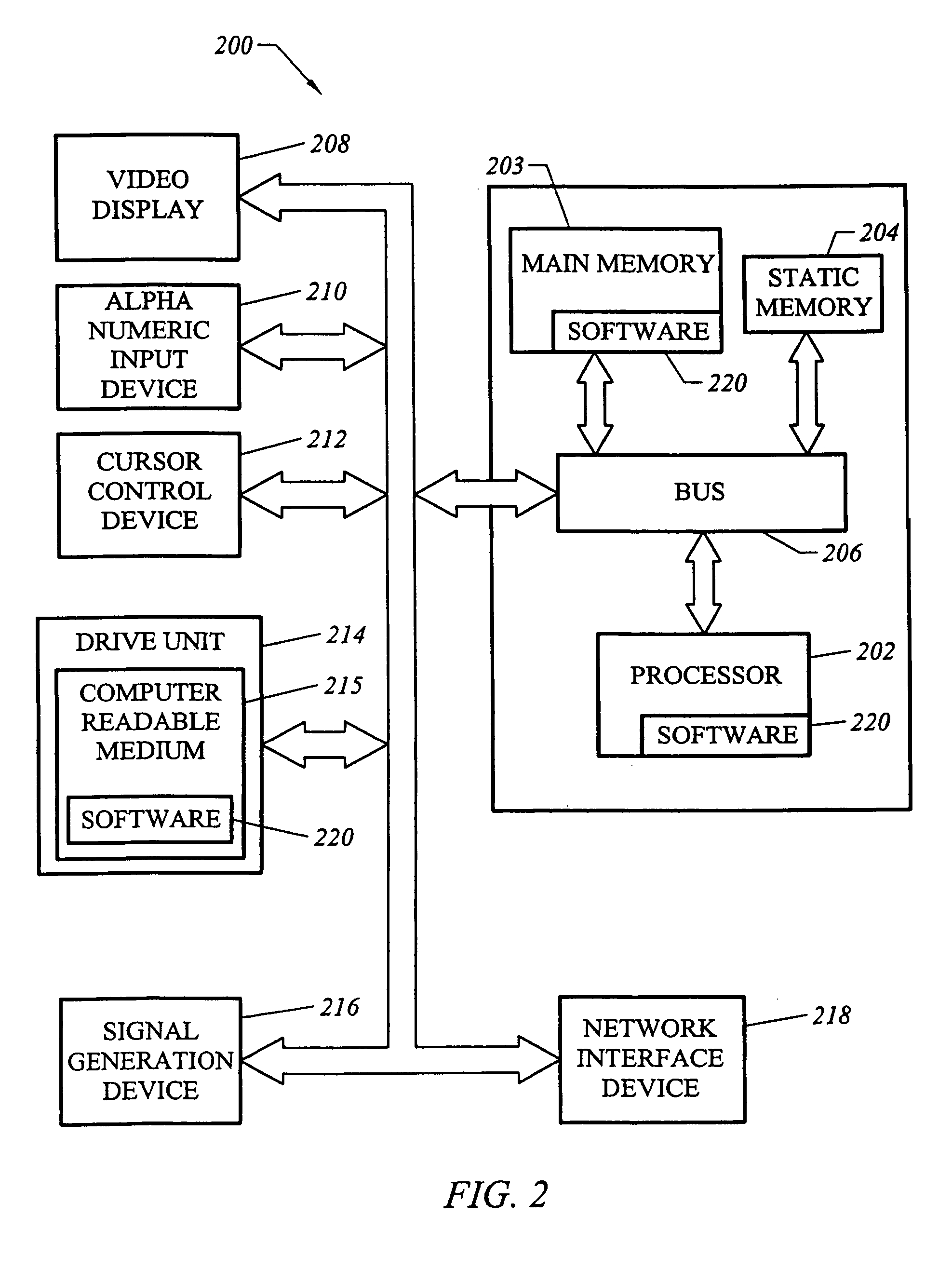Predictive toxicology for biological systems
a biological system and toxicology technology, applied in the field of predictive toxicology, can solve the problems of huge cost, multivariate problem, and the failure of 53 percent of drugs in phase ii of clinical trials, and achieve the effect of avoiding the failure of drugs
- Summary
- Abstract
- Description
- Claims
- Application Information
AI Technical Summary
Problems solved by technology
Method used
Image
Examples
example
[0100]The methods described herein can be implemented to evaluate drugs that can potentially induce cirrhosis. For example, the methods described herein can be implemented to identify effects of sulfonylurea drugs on liver metabolism. Sulfonylureas can bind to sulfonylurea receptors (“SURs”) associated with ATP-sensitive potassium channels (“KATP channels”) in plasma membranes of liver cells. When plasma glucose level is low such as during fasting, the KATP channels are open, thus keeping the liver cells hyperpolarized and limiting the entry of Ca++ into the liver cells. When a meal is consumed, plasma glucose level rises, and glucose uptake by the liver cells causes an increased production of intracellular ATPs, which bind to the KATP channels and cause the KATP channels to close. When the KATP channels close, the liver cells depolarize. Depolarization of the liver cells causes Ca++ channels in the plasma membranes to open and triggers the intracellular release of Ca++ from interna...
PUM
| Property | Measurement | Unit |
|---|---|---|
| temperature | aaaaa | aaaaa |
| chemical | aaaaa | aaaaa |
| chemical shape | aaaaa | aaaaa |
Abstract
Description
Claims
Application Information
 Login to View More
Login to View More - R&D
- Intellectual Property
- Life Sciences
- Materials
- Tech Scout
- Unparalleled Data Quality
- Higher Quality Content
- 60% Fewer Hallucinations
Browse by: Latest US Patents, China's latest patents, Technical Efficacy Thesaurus, Application Domain, Technology Topic, Popular Technical Reports.
© 2025 PatSnap. All rights reserved.Legal|Privacy policy|Modern Slavery Act Transparency Statement|Sitemap|About US| Contact US: help@patsnap.com



